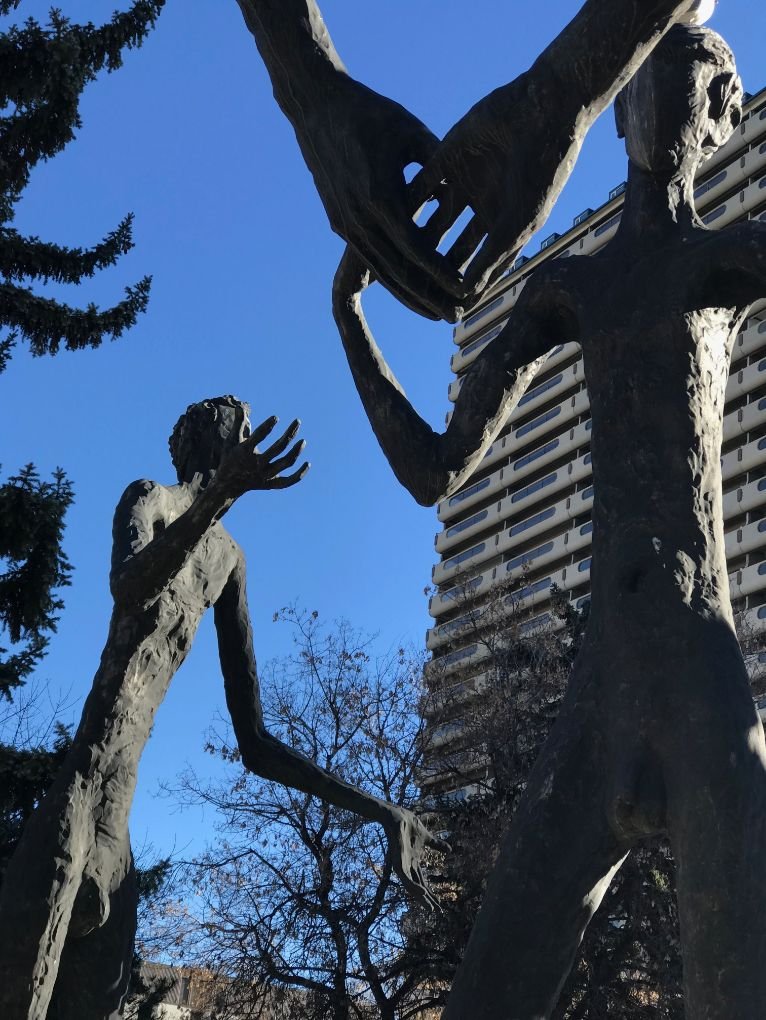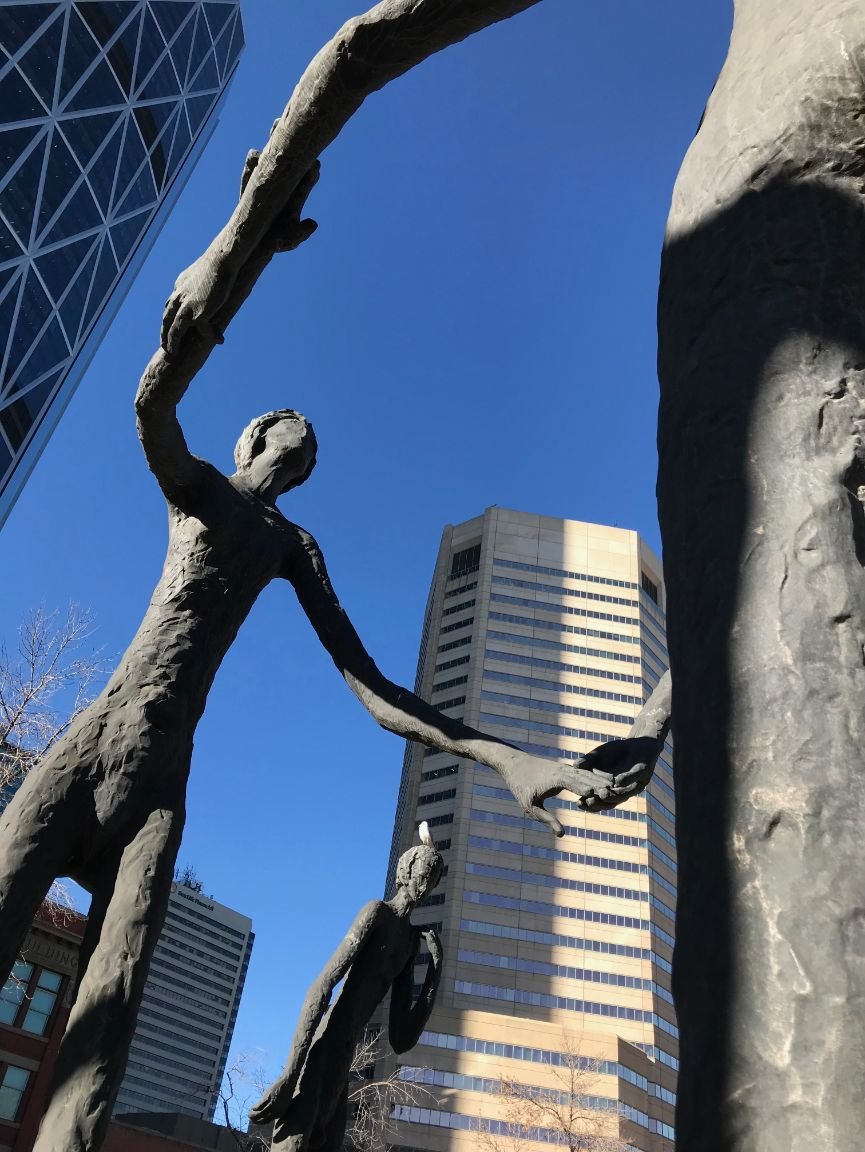“Brotherhood of Mankind” Sculpture Successfully Evokes A Sense of Brotherhood?
While Calgary’s new public art always get lots of attention (good and bad), one of my favourite pieces is Mario Armengol’s “The Brotherhood of Mankind” sculpture on the lawn of the now abandoned Calgary Board of Education Building, at the corner of 1st Street and 6th Ave S.E..
Installed in 1968, the sculpture still looks good. Too often with public art, the colours fade over time, or the relevance or impact of the piece just disappears into an every changing urban landscape. But recently while flaneuring in downtown, I found myself appreciating “Brotherhood of Mankind” like never before.
This time I took my time wandering around and under the ten, 20+ foot-high figures, reflecting on the juxtaposition and connections between them. The more I studied them, the more I began to see the tenderness expressed between the faceless, raceless figures. Perhaps it was the sense of “brotherhood” that I was experiencing.
At first glance, the sculpture looks like one big happy family in a circle (some people refer to it as The Family of Man), but the more you study it, the more you realize the figures are in fact segregated by the brick platforms they stand on. There a dozens of different ways to connect the 10 figures.
There is a couple with a child – the man with his hand gently placed on the woman’s shoulder, evoking a subtle sense of tenderness, perhaps lovingness.
There are two figures off to the side who look like they are waving good-bye to the couple, or perhaps hello.
Yet, another two figures, perhaps a young boy and young girl, have outstretched arms in what looks like a dancing pose.
One figure is all alone. Has he been ostracized from the group, or is he being invited to join the group?
I also spent some time focusing on the positioning and gestures of the hands and soon began to realize they are the key to the tenderness that exists between the figures. (Hand gestures in art have always fascinated me.) The interplay of the figures, arms and hands creates numerous narratives the more you ponder them.
Indeed, Armengol has created a lovely ambiguity that allows the viewer to create their own narrative, rather than the artist making a dogmatic statement.
Backstory
The figures were originally designed and installed as part of the British Pavilion’s exhibit titled “Britain in the World,” for Montreal’s Expo ’67. The skinny, naked, larger-than-life figures were located throughout the pavilion (not together in a circle, as they are in Calgary) and were a metaphor for the dominance of man in the modern world.
After Expo ’67 was over, the piece was auctioned off and Calgary businessman Maxwell Cummings purchased them and gifted them to the City. The piece was installed on the lawn next to the then new Calgary Board of Education Building (CBE), which was part of a ‘60s downtown urban renewal project that included the W.R. Castell Library, Bow Valley College, new YWCA and an apartment block.
Fun fact: There were no instructions on how to install the art and the artist wasn’t consulted on the installation of the 10 figures. Calgary City staff in the arts and culture department just decided to create the circle formation we see today. While there was lots of controversy at first with nude figures being installed on the front lawn of the CBE building, today they are accepted as part of downtown’s urban landscape.
In fact, if anything, they seem a bit forgotten today, as the buildings around them are mostly empty, including the former CBE building (the CBE moved several years ago to a new building in the Beltline). There was some question at the time of the move as to who owned the sculpture (City or School Board) and would it be moved to the new CBE building (as the sculpture is featured in the school board’s logo).
However, it doesn’t look like it is going anywhere soon. Perhaps they should be given a more high profile home. Or perhaps as part of Calgary’s ambitious, new Greater Downtown Plan, a new “Brotherhood of Man” park could be created, anchoring a new residential development on the eastern half of the block that integrates the brutalist former CBE building to create a unique sense of place in the downtown. Or maybe the lawn/block could become a sculpture park. Just an idea.
Last Word
As I walked away, I had a strange feeling. Could it have been a sense of “brotherhood” with my fellow man?” Given all the dividedness in the world these days, I think we could all use a little more “brotherhood,” or perhaps in today’s world, “humanhood.”
In the past, I always focused on the scale of the figures, which are monstrous not only in scale, but in their rugged surface, faceless heads and drab grey colour.
Sometimes you just have to be in the right place, at the right time, and in the right “headspace,” to have a profound encounter with public art. Or any art for that matter.
If you like this blog, you will like these links:
Public Art: Love it or hate it!














